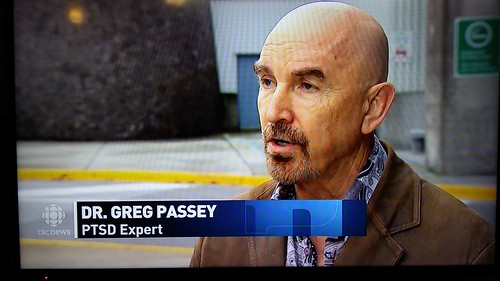A Novel Therapy, Using Writing, Shows Promise for PTSD
PTSD #PTSD

The two therapies were found to be equally effective, and only 12.5 percent of subjects dropped out of the written exposure group before completing a course of treatment, compared with 35.6 percent in the prolonged exposure group. In 2018, a study by the same team found that written exposure therapy was as effective as cognitive processing therapy, another first-line, or most highly recommended, PTSD treatment.
Writing down traumatic memories may be easier for some people, if they feel shame or embarrassment about what happened to them, said Denise Sloan, a psychologist who helped develop the treatment and is an author of the study. She said patients were asked to write by hand, which takes longer and allows them to engage with the memory.
“It’s a slower process, that allows them to better think through ‘what happened next, and who was there, and what did they say,’ because they’re writing about it,” said Dr. Sloan, associate director of the Behavioral Science Division of the National Center for PTSD. “It slows everything down, versus just saying it out loud.”
The therapy was inspired by the work of James Pennebaker, a Texas psychologist who, in the 1980s, began experimenting with what he called “expressive writing,” and found that people who regularly wrote about negative life experiences had stronger immune systems and paid fewer visits to the doctor.
The first study of written exposure therapy as a treatment for PTSD appeared in 2012. It works, Dr. Sloan said, much the way other trauma-focused treatments do: by allowing the client to confront the traumatic memory, lessening their fear and avoidance, and allowing them to identify misconceptions like self-blame.
Why It Matters
Cognitive processing therapy and prolonged exposure therapy, the two treatments most highly recommended by the Departments of Veterans Affairs and Defense, have been in widespread use since the 1980s and are backed up by abundant research. A newer method, eye movement desensitization and reprocessing, is rapidly growing in popularity.
But all three are time-intensive, requiring sessions of 60 to 90 minutes for three months or more. A large number of patients — an average of 20 percent, and sometimes as high as 50 percent, studies have shown — drop out before completing a course of treatment.
Written exposure therapy, Dr. Sloan said, seems to achieve similar effects in fewer sessions.
“We have a lot of people that need mental health treatment, and we can’t accommodate the demand,” she said. “We need to revisit what we’re doing and how much is necessary for a good outcome. Because most people can’t go to treatment for 12 to 16 sessions.”
What’s Next
Data on the effectiveness of written exposure therapy is still emerging.
The studies comparing it to cognitive processing therapy and prolonged exposure therapy are non-inferiority trials — devised to demonstrate that a newer treatment is not worse than an established one — and “not as scientifically stringent” as trials devised to determine superiority, said Dr. Barbara Rothbaum, one of the developers of prolonged exposure therapy. She added that dropout rates at her clinic, at Emory University, were around 10 percent.
There is a reason, she said, that talk therapy has such a strong record of success in treating PTSD.
“There is something inherently healing about saying out loud the worse, most scary, most embarrassing, most shameful moment of your life to another human who is trying to be helpful,” she said. “Does it have to be that? No.”
Written exposure therapy was not endorsed as a first-line intervention by the Departments of Veterans Affairs and Defense in its most recent clinical practice guidelines, largely, Dr. Sloan said, because of the small number of published studies examining it.
That is likely to change over the next two years, she said, as a number of larger trials are completed. Clinicians, too, are going to have to get used to the idea of using writing, in addition to speech, to engage with patients on painful topics.
“Some people, they feel threatened by this, because it kind of challenges the crux of what they generally do,” she said. “It flies in the face of what they think is important in treatment.”